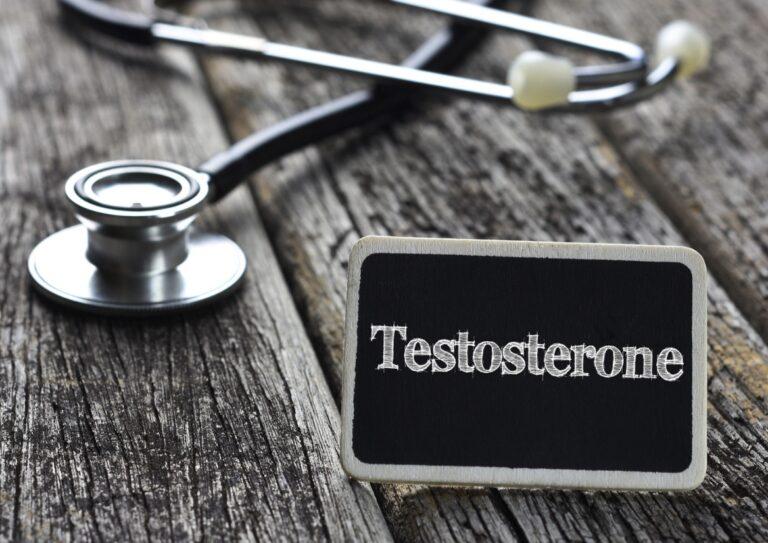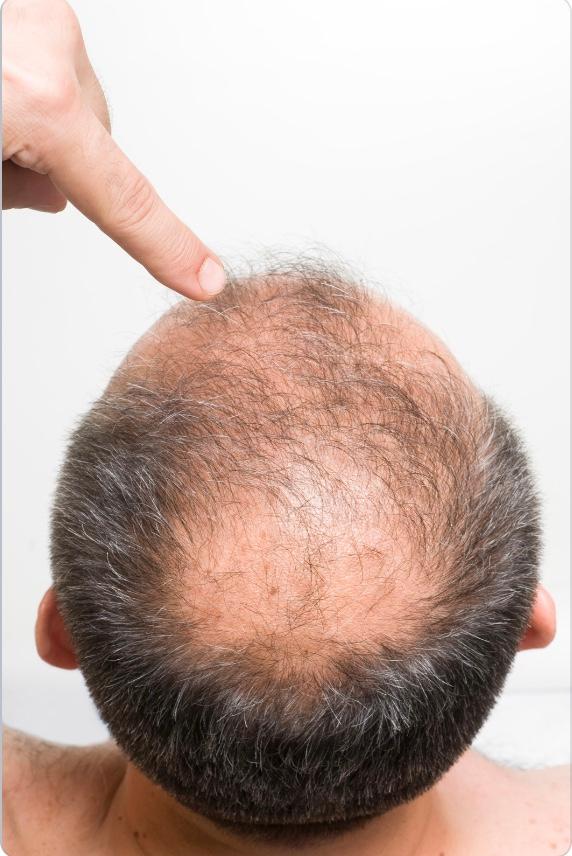
October 15, 2025 (Current Version)
March 28, 2025
For many men considering testosterone replacement therapy (TRT), the prospect of hair loss (androgenetic alopecia) can be a significant concern. After all, a full head of healthy hair is often associated with youth and vitality, the very qualities TRT aims to restore. Does TRT cause hair loss? Let’s dive into this and separate fact from fiction.
Understanding androgenetic alopecia
Definition
Androgenetic alopecia (AGA) is the most common form of hair loss, affecting both men (in the form of male pattern baldness) and women (in the form of female pattern hair loss). This condition is characterised by a genetic sensitivity to androgens, leading to progressive hair thinning and loss. AGA typically begins after puberty and can impact up to 50% of both males and females.
Patterns of hair loss in men vs women
AGA looks different in men and women, following distinct patterns:
In men:
- Hair loss is most prominent in the crown and frontotemporal regions
- Receding hairline at the temples, forming an “M” shape
- Balding of the vertex occurs, often leading to complete hair loss in these areas
In women:
- The frontal hairline is usually unaffected
- Hair thinning occurs diffusely at the crown and top of the head
- A wider centre part often becomes noticeable
Despite these differences, the underlying cause is the same in both genders. The key features of AGA include:
- Changes in the hair growth cycle
- Follicular miniaturization (hair follicles shrink)
- Inflammation
In AGA, the anagen (growth) phase of the hair cycle progressively shortens with each cycle, while the telogen (resting) phase remains constant or becomes prolonged. This leads to reduced hair density with shorter, thinner hairs. Eventually, the anagen phase becomes so brief that the growing hair fails to reach the skin’s surface, resulting in an empty follicular pore.
The TRT and hair loss connection
Testosterone is the hormone primarily responsible for a man’s sex drive, sperm production, body hair growth, facial hair, and muscle mass. testosterone replacement therapy is designed to boost levels of testosterone in men experiencing symptoms of low testosterone. However, the relationship between TRT and hair loss isn’t as straightforward as you might think.
TRT doesn’t directly cause hair loss. Instead, it’s the conversion of testosterone to dihydrotestosterone (DHT) that can potentially accelerate hair loss/androgenic alopecia in men who are genetically predisposed to male pattern baldness.
DHT
Dihydrotestosterone, or DHT, is a potent androgen derived from testosterone. While DHT plays a crucial role in male development, it’s also the main cause of hair loss.
When you undergo TRT, your body has more testosterone available. For some men, this means more testosterone can be converted to DHT via an enzyme called 5-alpha reductase, potentially accelerating hair loss if you’re genetically susceptible. DHT can bind to the hair follicle receptors, damaging the hair follicle and causing hair loss and male pattern baldness to be accelerated.
It’s in your genes
Your genetic makeup largely determines whether you’ll experience hair loss with TRT. If male pattern hair loss runs in your family, you’re more likely to see accelerated hair loss when undergoing testosterone therapy.
But don’t despair! Even if you have a genetic predisposition, it doesn’t mean hair loss is inevitable. There are ways to minimise the risk and manage any hair loss that does occur.
Keeping your hair while on TRT
If you’re concerned about hair loss but still want to reap the benefits of TRT, consider these preventive measures:
- Monitor your DHT levels: Regular blood tests can help you and your doctor keep an eye on your DHT levels
- Consider DHT blockers: Medications like finasteride can help reduce DHT levels without interfering with your TRT
- Optimise your TRT medication: Work with your doctor to find the lowest effective dose of testosterone to minimise potential side effects
- Maintain scalp health: Use hair care products designed to support scalp health and promote hair growth
Treatment options
If you do experience hair loss while on testosterone treatment, don’t lose hope. There are several hair loss treatment options available:
- Minoxidil: This over-the-counter topical medication can help slow hair loss and even promote new growth
- Hair transplantation: For more advanced hair loss, surgical options like hair transplants can provide a permanent solution
- Low-level laser therapy: This emerging treatment shows promise in stimulating hair growth
Final note
Testosterone replacement therapy doesn’t automatically lead to hair loss. While it can potentially accelerate hair loss in men genetically predisposed to male pattern baldness, many men undergo TRT without significant hair loss.
The key is to work closely with your healthcare provider, monitor your DHT levels, and take preventive measures if you’re concerned about hair loss. Remember, the benefits of TRT – increased energy, improved mood, and enhanced sex drive can significantly improve the quality of life for many men.
Ultimately, the decision to start TRT should be based on a comprehensive evaluation of your health needs and potential risks. Don’t let fear of hair loss prevent you from exploring a treatment that could significantly improve your well-being.
By staying informed and proactive, you can make the best decision for your health and potentially enjoy the benefits of TRT while keeping your hair intact.
Sources
- Long-term testosterone therapy in hypogonadal men ameliorates elements of the metabolic syndrome: an observational, long-term registry study – PubMed
- Testosterone therapy: Potential benefits and risks as you age – Mayo Clinic
Medical Disclaimer
NowPatient has taken all reasonable steps to ensure that all material is factually accurate, complete, and current. However, the knowledge and experience of a qualified healthcare professional should always be sought after instead of using the information on this page. Before taking any drug, you should always speak to your doctor or another qualified healthcare provider.
The information provided here about medications is subject to change and is not meant to include all uses, precautions, warnings, directions, drug interactions, allergic reactions, or negative effects. The absence of warnings or other information for a particular medication does not imply that the medication or medication combination is appropriate for all patients or for all possible purposes.






